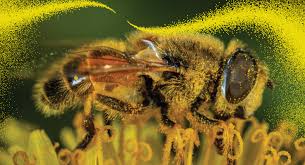The News about Pollinators in the United States

While the decline of honeybees and other pollinators is still newsworthy, 2014 seemed to be the peak year of the attention paid to this problem by the news media and the general public.
In 2003, the neonicotinoid group of insecticides was approved by EPA and three years later, the colony collapse disorder with forging bees not able to find their way back to the hive was noticed.
While insecticides are not the only cause in the decline of pollinators, others are the Varroa mite that eats the fatty tissue of bees, and viruses which weaken bees.
After a presentation in San Antonio, Texas, USDA scientist John Lundgren was harassed by the pesticide industry as billions of dollars rested on their ability to sell their products to agriculture such as those used to coat seeds before planting for insect control. Mr. Lundgren noticed that the Varroa mite received more attention as he theorized that the more that the mite was found as the main problem, detrimental news about pesticides would be diluted. Mr. Lundgren went on to say that as state and federal finds have diminished, industry has stepped up and that science now is for sale to the highest bidder.
In his own field observation, Mr. Lundgren even noticed some instances of the ineffectiveness of neonicotinoids and cases where natural predators of harmful insects were killed leaving the “bad” insects to ravage the crop.
He has concluded from his research that while the cause of pollinator decline is complex, they are only symptoms of a much bigger problem. Mr. Lundgren is convinced that the answer is in the soil and strangely enough, Rutgers University in New Jersey was convinced that the cure for tuberculosis would come from the soil and in fact it did by the development of streptomycin from the soil borne bacteria called streptocarpus.
The relentless use of pesticides, especially neonicotinoids, monocrop culture, increasing lack of bio diversity, and the loss of wild areas with allowing plants for pollinators to forage all have contributed to the decline.
Healthy soils make for healthy crops and thus healthy insect pollinators.

The shift is beginning even now in farming practices such as new experiments in the UK of planting strips of pollinator friendly plants in crops instead of a monoculture crop.
The hope is that the strips will serve pollinators and become a nursery for beneficial insects to protect crops without pesticide use. Although the pollinator problem is still in the news, interest has waned especially concerning the general public. Time is not on our side.
